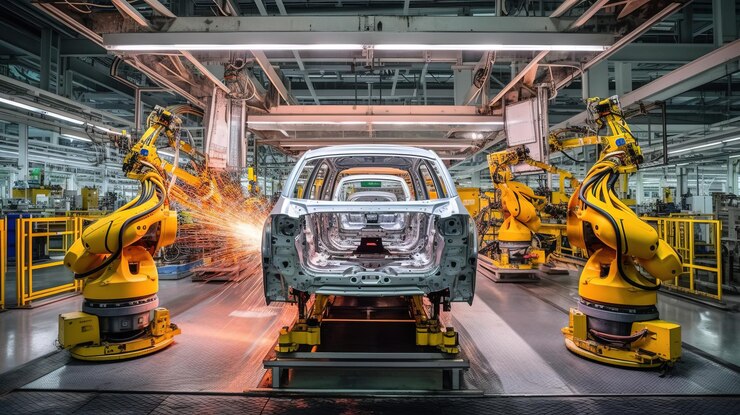
Driving Forward: Automation’s Role in the Automotive Industry
Robotic Assembly Lines
One of the most prominent applications of automation in the automotive industry is in robotic assembly lines. Robots perform repetitive tasks such as welding, painting, and assembling parts with precision and speed. This not only speeds up the production process but also ensures consistency and reduces human error.
Flexible Manufacturing Systems
automation in automotive industry allows for flexible manufacturing systems that can adapt to different models and customizations. Automated guided vehicles (AGVs) transport materials within factories, and programmable machines adjust to produce various parts. This flexibility enables manufacturers to respond quickly to market demands and reduce downtime.
Improving Quality and Precision
Quality Control
Automation enhances quality control in the automotive industry. Advanced sensors and vision systems inspect components for defects during production. Automated systems ensure that every part meets strict quality standards, resulting in fewer recalls and higher customer satisfaction.
Precision Engineering
Automation enables precision engineering, crucial for complex automotive components. Computer numerical control (CNC) machines and 3D printing technology produce intricate parts with high accuracy. This precision leads to better-performing vehicles and prolongs their lifespan.
Boosting Safety
Safety in Production
Automation improves safety on the production floor by taking over dangerous tasks. Robots handle hazardous materials and heavy lifting, reducing the risk of workplace injuries. Automated safety systems monitor the environment and machinery, preventing accidents.
Vehicle Safety Features
Automation also enhances vehicle safety features. Advanced driver-assistance systems (ADAS) such as automatic emergency braking, adaptive cruise control, and lane-keeping assistance rely on automation to improve driver and passenger safety. These technologies are becoming standard in modern vehicles, reducing the likelihood of accidents.
Streamlining Supply Chains
Efficient Logistics
Automation streamlines supply chains by optimising logistics and inventory management. Automated warehouses use robotic systems to store and retrieve parts efficiently. This reduces lead times and ensures that manufacturers have the necessary components when needed.
Predictive Maintenance
Automation enables predictive maintenance in supply chains. IoT sensors and data analytics monitor equipment and predict when maintenance is required. This proactive approach minimises downtime and extends the lifespan of machinery, ensuring smooth production processes.
Future Innovations
Electric and Autonomous Vehicles
Automation plays a pivotal role in the development of electric and autonomous vehicles. Automated manufacturing processes produce batteries and electric drivetrains efficiently. Autonomous driving technology relies on automation to process data from sensors and make real-time decisions, paving the way for safer and more efficient transportation.
Sustainable Manufacturing
Automation contributes to sustainable manufacturing practices. Energy-efficient robots and automated systems reduce waste and minimise the environmental impact. Automation also supports the recycling of materials, promoting a circular economy in the automotive industry.
Conclusion
Automation in the automotive industry is driving significant advancements in efficiency, quality, safety, and sustainability. From robotic assembly lines to autonomous vehicles, automated technologies are transforming every aspect of the industry. By embracing automation, the automotive sector can meet the challenges of the future and continue to innovate. As the industry evolves, automation will remain a key factor in its success, ensuring that vehicles are produced faster, safer, and more sustainably than ever before.


